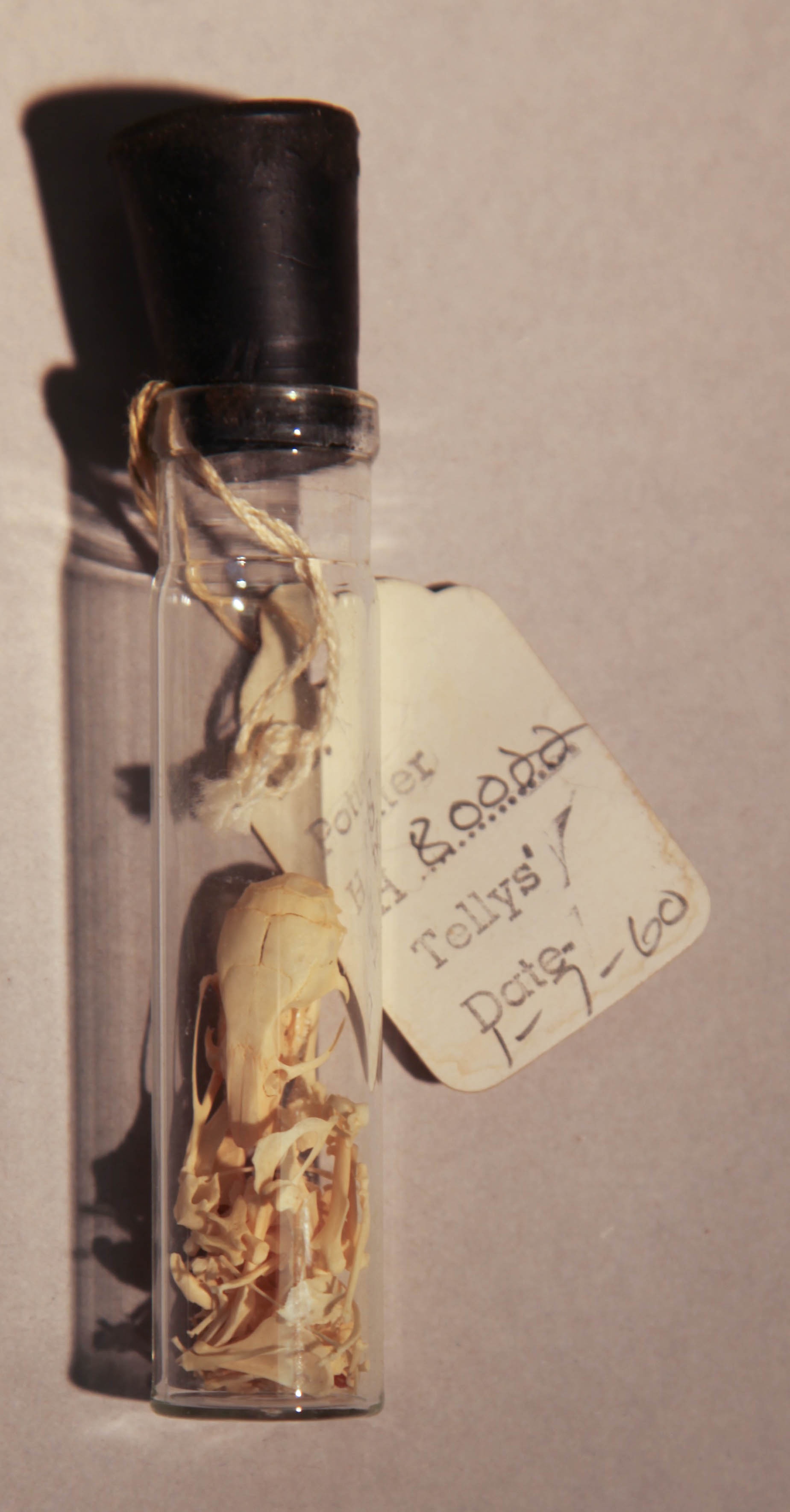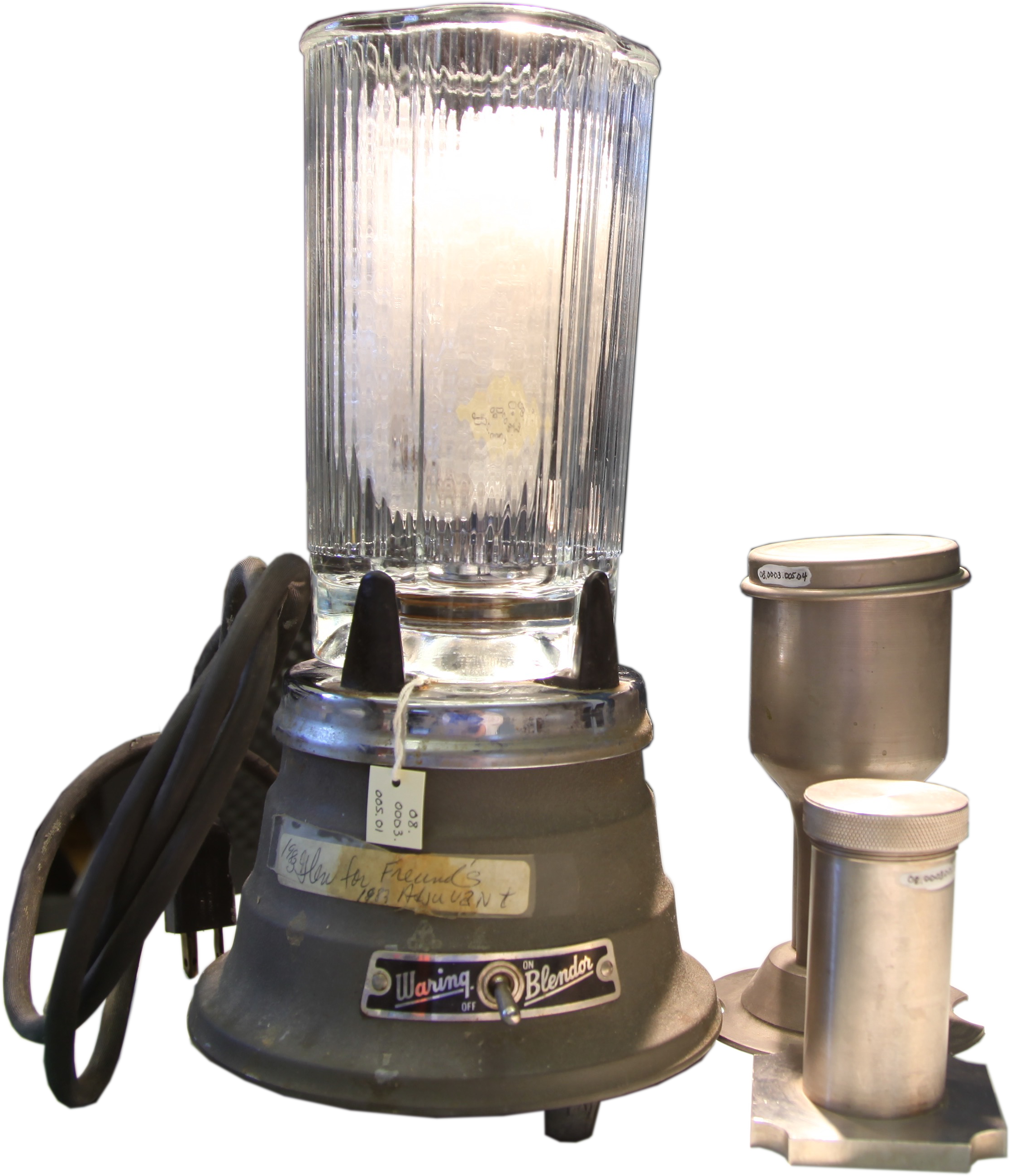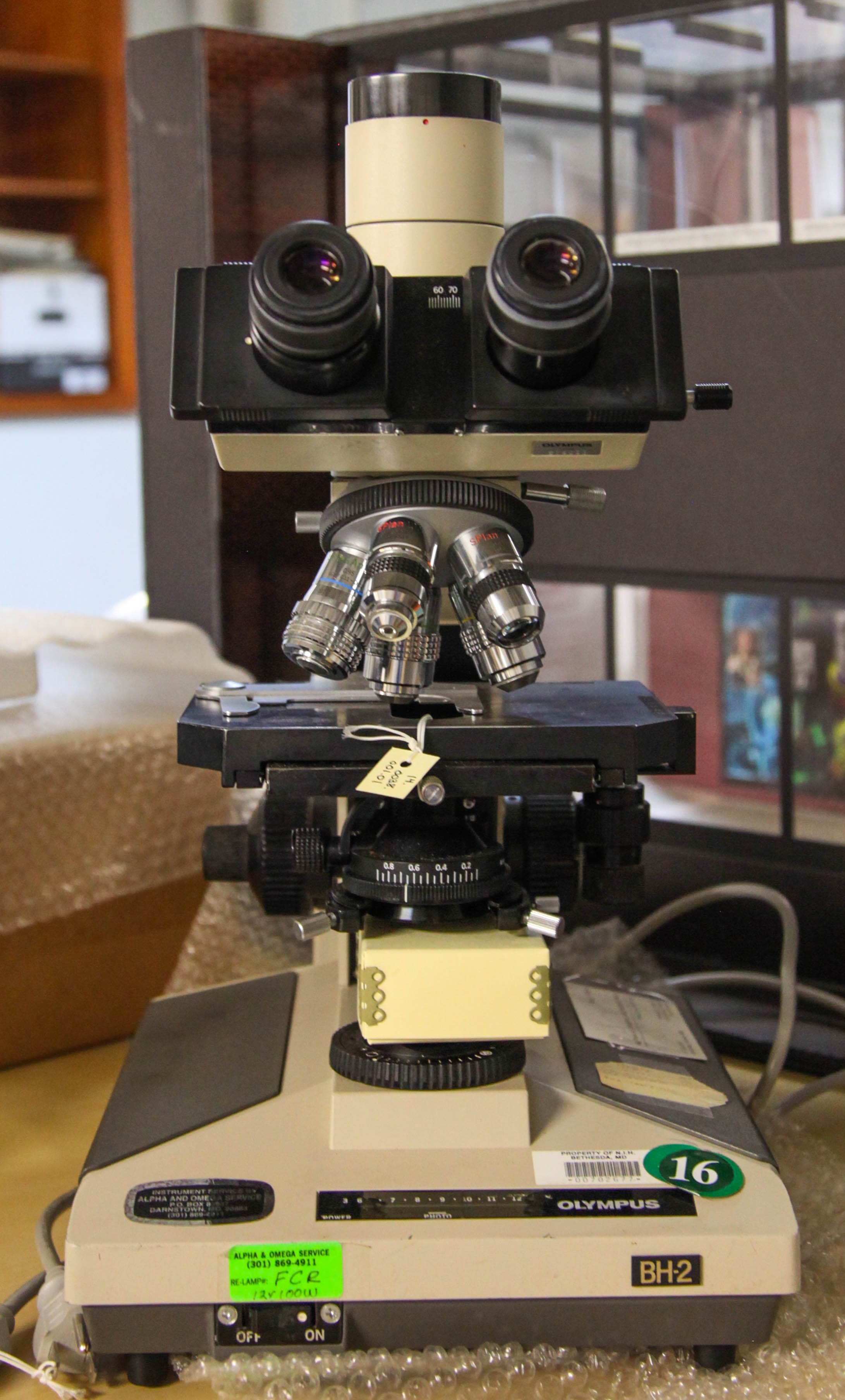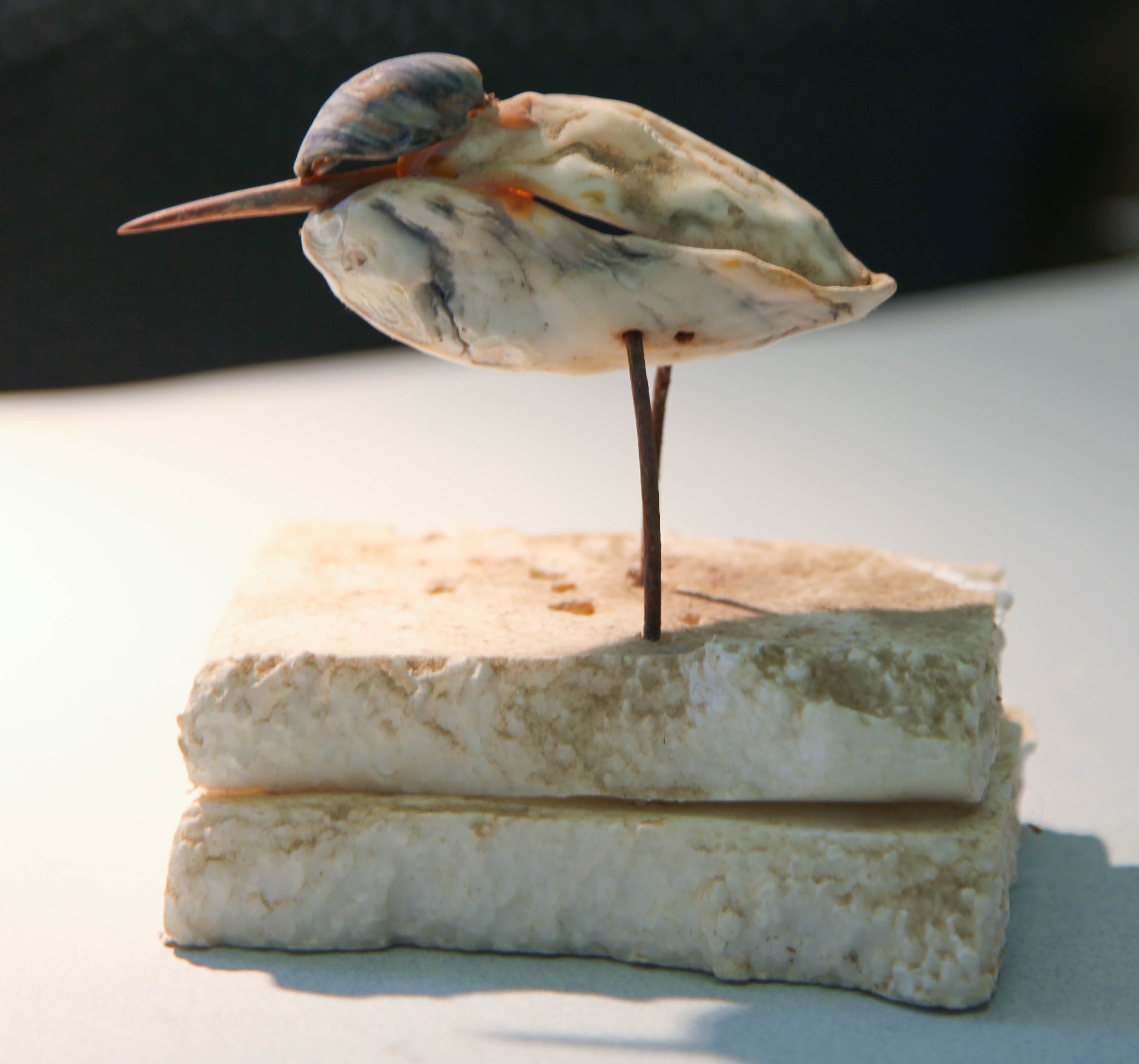Potter NIH Stetten Museum Artifact Page
Esso Standard Oil Co. Bayol F Drum, c. 1960
13.0017.008
DONATED BY DR. BEVERLY MOCK
This barrel of mineral oil was used by Dr. Michael Potter to induce plasma cell tumors in mice.
Read Potter and Boyce’s paper “Development of Plasma-Cell Neoplasms in BALB/c Mice After Intraperitoneal Injection of Paraffin-Oil Adjuvant, Heat-Killed Staphylococcus Mixtures,” Journal of the National Cancer Institute, 25(4), October 1960, pp. 847-861.
Learn more on the Esso Oil Drum artifact page.
Mouse Reliquaries, 1960-1961
13.0017.006-7
DONATED BY DR. BEVERLY MOCK
Potter wanted to study the early stages of tumor growth, but the tumors only grew in animals. Each of these containers holds the bones of one mouse. The labels indicate the mouse’s identifying number, gender, and colony, as well as what the mouse was injected with, such as “1 dose one Fruends adj + Staph” or “mineral oil only,” and when it was injected. Potter would inspect the bones for lesions about 90 days after tumor X5563 had been transplanted into the mice.
Read Nordan and Potter’s paper, “A macrophage-derived factor required by plasmacytomas for survival and proliferation in vitro,” Science 233(4763), 01 Aug 1986, pp. 566-569.
Learn more on the Mouse Reliquaries Artifacts page.
Waring Blendor 700, c. 1963
08.0003.005
Donated by Dr. Rose Mage
Drs. Michael Potter and Rose Lieberman prepared their Freund’s adjuvant in a Waring Blendor (yes, that should be an “o”). An adjuvant is a substance that affects an action in a predictable way; Potter used Freund’s adjuvant to generate mouse plasma cell tumor cell lines. Freund’s adjuvant, named after Dr. Jules Freund, keeps an antigen from breaking down quickly and/or increases its effects.
For a complete look at Freund’s impact, see “Jules Freund, 1890-1960,” Journal of Immunology, 909(3), 1963, pp. 330-336.
Learn more on the Waring Blendor Artifacts page.
Olympus BH-2 Microscope, c. 1985
14.0038.001
Donated by Dr. Beverly Mock
Scientists are often associated with microscopes, and in some cases, for good reason. Dr. Michael Potter was usually at his laboratory bench using his Olympus BH-2 Microscope. The BH-2 was part of the first Olympus series that allowed a microscope to the transformed to meet many specifications by switching the microscope head lens modules.
More information is available on the Olympus Microscope Artifacts page.
Bird shell sculptures
3.0025.001-6
Donated by Melissa Potter Adde
An inveterate beach comber, Dr. Michael Potter expressed his artistic side when he created sculptures of sea birds like pelicans and terns from shells and stones that he had collected. He had a good eye for which shells would fit together to become part of a bird’s body.
123.456.78
Donated by person
Description
123.456.78
Donated by person
Description
123.456.78
Donated by person
Description
123.456.78
Donated by person
Description
123.456.78
Donated by person
Description
123.456.78
Donated by person
Description
123.456.78
Donated by person
Description






